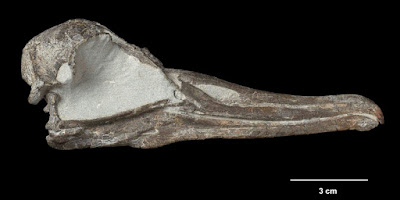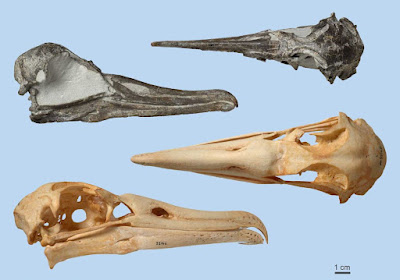[Most Recent Entries] [Calendar View]
Wednesday, July 17th, 2019
| Time | Event | ||||||
| 9:12a | [Ichthyology • 2019] Aenigmachanna mahabali • A New Species of Troglophilic Snakehead (Pisces: Channidae) from Kerala, India
Abstract Aenigmachanna mahabali, a new species of troglophilic snakehead is described on the basis of a single specimen recovered from a well in Kerala, India, over 200km south of the type locality for the only known species in the genus. The new species can be distinguished from its congener in possessing fewer dorsal fin rays (53 vs 56-57), fewer total vertebrae (61 vs 64), fewer scales in lateral series (76 vs 83-85) and in the pectoral-fin rays being extended beyond the margin of the membrane into filaments. Keywords: Pisces, Subterranean fish, troglomorph, anabantiform Rahul G. Kumar, V.S. Basheer and Charan Ravi. 2019. Aenigmachanna mahabali, A New Species of Troglophilic Snakehead (Pisces: Channidae) from Kerala, India. Zootaxa. 4638(3); 410–418. DOI: 10.11646/zootaxa.4638.3.6 | ||||||
| 10:21a | [PaleoOrnithology • 2019] Aldiomedes angustirostris • A Small, Narrow‐beaked Albatross from the Pliocene of New Zealand demonstrates A Higher Past Diversity in the Feeding Ecology of the Diomedeidae
Abstract We describe a nearly complete, three‐dimensionally preserved skull of a new albatross species from the late Pliocene (3.0–3.4 million years ago) Tangahoe Formation of New Zealand. Aldiomedes angustirostris, n. gen. et sp. has only about 90% of the length of the skull of the smallest extant albatross and is the geologically youngest record of a small‐sized albatross known to date. The new species is characterized by a mediolaterally compressed beak, which is not found in any living albatross. The small size and some cranial features of A. angustirostris indicate that, in spite of its comparatively young geological age, the new species was not part of crown group Diomedeidae. We hypothesize that A. angustirostris was more piscivorous than extant albatrosses, which predominantly feed on squid. The reasons for the extinction of smaller‐sized albatrosses are elusive but may be related to changes in seabird fauna during the Pliocene epoch, which witnessed the radiation of various non‐procellariiform seabird groups. Keywords: Aldiomedes angustirostris, n. gen. et sp., Aves, evolution, palaeoecology
Aves Linnaeus, 1758 Procellariiformes Fürbringer, 1888 Diomedeidae Gray, 1840 Aldiomedes, n. gen. Aldiomedes angustirostris, n. sp. Differential diagnosis: Small‐sized albatross, which differs from all extant Diomedeidae (Phoebetria, Phoebastria, Thalassarche and Diomedea) in: smaller size (Table 1), beak mediolaterally narrower and culmen more ridge‐like, nostrils proportionally larger and with slit‐like caudal margin, fossae glandularum nasales narrower, processus paroccipitales more caudally directed, fossae temporales deeper, and crista nuchalis transversa more sharply defined. Etymology: The taxon is named in honour of Alastair (‘Al’) Johnson, who found the holotype of the new species; the second part of the name refers to Diomedes, the Greek mythological figure, after which the albatross family was named.
Aldiomedes angustirostris, n. sp. Etymology :The species epithet is derived from angustus (Lat.): narrow and rostrum (Lat.): beak and refers to the unusually narrow beak of the new species. Gerald Mayr and Alan J. D. Tennyson. 2019. A Small, Narrow‐beaked Albatross from the Pliocene of New Zealand demonstrates A Higher Past Diversity in the Feeding Ecology of the Diomedeidae. Ibis. DOI: 10.1111/ibi.12757 twitter.com/IBIS_journal/status/1151408167923998720 twitter.com/CoastalPaleo/status/1151482652853190656 |
| << Previous Day |
2019/07/17 [Calendar] |
Next Day >> |







